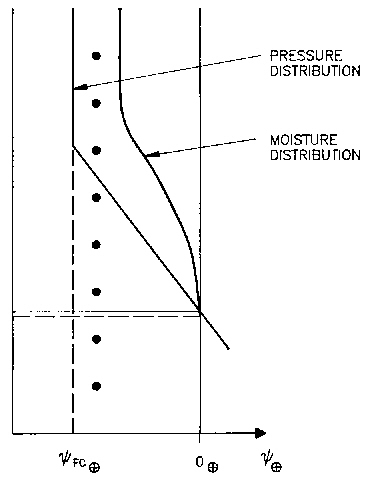
By default, the initial conditions for y are generated by MIKE SHE assuming an equilibrium soil moisture/pressure profile with no-flow. The equilibrium profile is calculated assuming hydrostatic conditions, as illustrated in Figure 28.2. The pressure decreases linearly from zero at the groundwater table to yFC when the moisture content reaches the field capacity and is then constant for all nodes above this point. The assumption is that the flow is (almost) zero at moisture contents below the field capacity.
The assumption that the initial water content is not below field capacity means that ET can occur from the first time step. If the water content was based on the saturation-pressure profile all the way to the residual water content, then the model would likely start with very dry soils. There would be no recharge or ET until the soils wetted up after significant rainfall.
However, in arid and semi-arid conditions the equilibrium water content may be quite low, as the soil profile may have drained for a long time with little infiltration. In this case, it is usually better to base the initial condition on the full saturation-pressure relationship - all the way to residual water content.
In both cases, an initial warm up of the UZ is usually required. In the first case, there will be some initial drainage from the UZ as the moisture content equilibrates with the rainfall rate. In the second case, the soil profile will gain water and the groundwater recharge will be initially very low as the soil profile absorbs all of the infiltration.

Figure 28.2 Illustration of initial soil moisture profile and pressure head profile.